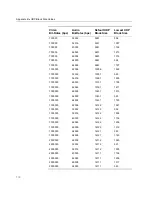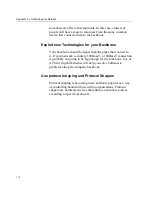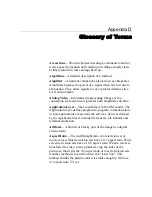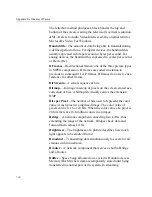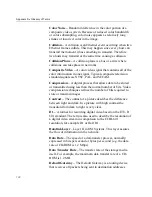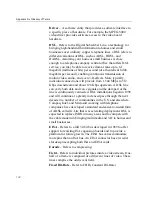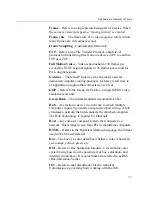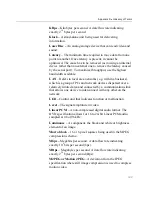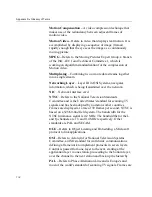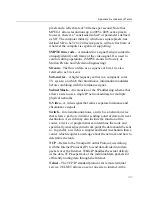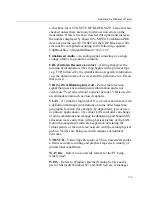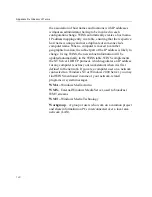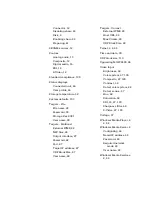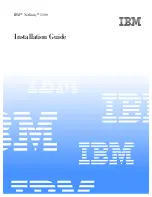
Appendix D
•
Glossary of Terms
Driver –
A software entity that provides a software interface to
a specific piece of hardware. For example, the MPEG-5000
video driver provides software access to the video board
hardware.
DSL
– Refers to the Digital Subscriber Line, a technology for
bringing high-bandwidth information to homes and small
businesses over ordinary copper telephone lines. xDSL refers to
different variations of DSL, such as ADSL, HDSL, and
RADSL. Assuming your home or small business is close
enough to a telephone company central office that offers DSL
service, you may be able to receive data at rates up to 6.1
megabits (millions of bits) per second (of a theoretical 8.448
megabits per second), enabling continuous transmission of
motion video, audio, and even 3-D effects. More typically,
individual connections will provide from 1.544 Mbps to 512
Kbps downstream and about 128 Kbps upstream. A DSL line
can carry both data and voice signals and the data part of the
line is continuously connected. DSL installations began in 1998
and will continue at a greatly increased pace through the next
decade in a number of communities in the U.S. and elsewhere.
Compaq, Intel, and Microsoft working with telephone
companies have developed a standard and easier-to-install form
of ADSL called G.Lite that is accelerating deployment. DSL is
expected to replace ISDN in many areas and to compete with
the cable modem in bringing multimedia and 3-D to homes and
small businesses.
EISA –
Refers to a full 32-bit bus developed in 1989 to offer
support for existing ISA expansion boards and to provide a
platform for future growth. The EISA bus can accommodate
more pins than an ISA bus. An EISA connector has a two-tier
slot design accepting both ISA and EISA cards.
Encode –
Refers to compressing.
Field –
Refers to individual pictures inside a video stream. One-
half of a frame is composed of odd (even) lines of video. These
lines comprise the odd (even) field.
Fixed Bit-Rate
- Refer to CBR (Constant Bit-Rate).
130

